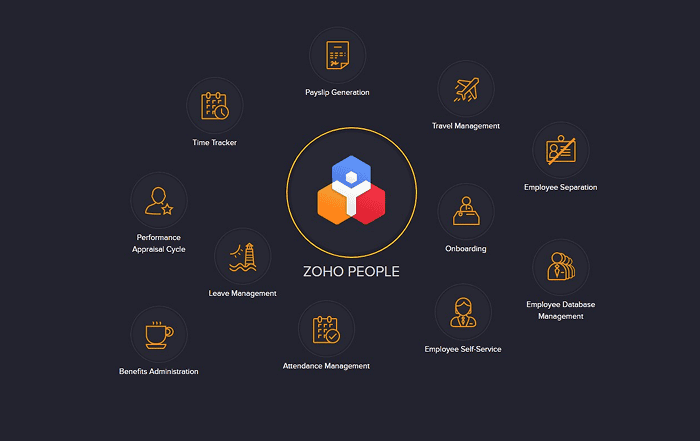
By 2025, cloud adoption is crucial for companies trying to remain competitive in a world that is becoming increasingly digital. Unmatched cost effectiveness, scalability, and security are provided by moving to AWS; nonetheless, a smooth transfer necessitates meticulous preparation and implementation. Due to a lack of preparedness, many firms face unforeseen expenses, downtime, and security vulnerabilities.
Use this blog as a manual to get moving your workloads to AWS. This blog will provide the knowledge you need to evaluate your present infrastructure, choose the best migration plan, optimize expenses, and steer clear of frequent hazards to make your AWS move smooth and future-proof.
What Are the Key Steps in Planning a Successful AWS Migration?
To guarantee a seamless transfer from on-premises or current cloud architecture to AWS, a thorough and organized methodology is needed to plan a successful AWS migration.
- The first step in the process is a comprehensive evaluation of the present infrastructure to comprehend the data, network settings, applications, and systems in place. The workloads that are appropriate for migration and the interactions between various components within the environment are both determined by this evaluation. Determining the relationships between databases and apps is essential to preventing interruptions throughout migration. Clearly outlining migration goals and objectives, such as cost savings, increased scalability, or greater security, is another aspect of this process. Early involvement of essential stakeholders guarantees alignment with regulatory requirements and business needs. Working with an AWS consulting partner can streamline this assessment process and address all technical and business considerations effectively.
- The next stage is choosing the best migration plan after evaluating the existing infrastructure. Rehosting (lift-and-shift), re-platforming (lift-tinker-and-shift), and refactoring (rearchitecting) are some of the migration strategies that AWS provides. Rehosting is a simple and affordable solution for businesses looking to utilize the cloud quickly because it entails migrating apps to AWS with little change. To optimize apps for AWS without altering their fundamental design, re-platforming entails making minor adjustments. For refactoring, the most complicated approach, apps must undergo substantial modifications to utilize cloud-native features fully. Several variables influence the approach selection, including application complexity, long-term corporate objectives, and financial limitations. Choosing the appropriate AWS services, including database, storage, and processing options, is crucial to facilitating the conversion and guaranteeing peak performance. Collaborating with an AWS partner Kerala can provide localized expertise, ensuring compliance with industry regulations and optimizing cloud adoption strategies tailored to regional business needs.
- To carry out the migration plan successfully, a thorough timetable must be established and roles and duties must be assigned. A detailed plan should specify the order in which databases, services, and applications will be moved, prioritizing components according to their interdependencies and commercial significance. Businesses, IT teams, and security experts should be given distinct roles to enable a coordinated effort. Configuring the required security groups, VPCs, and IAM policies sets up the AWS environment during the migration execution phase. The next step is data migration, which is accomplished securely using AWS products like AWS Server Migration Service (SMS) and AWS Database Migration Service (DMS). Extensive testing and validation are carried out following the migration of workloads and applications to guarantee data integrity and application performance. Utilizing AWS managed services during this phase can help businesses automate critical processes, enhance security, and reduce operational overhead.
- After migration, continuous monitoring and management of AWS resources is necessary to optimize performance, save expenses, and preserve security. By putting automatic alerting systems and monitoring technologies into place, such problems may be proactively identified and fixed. Using AWS services to automate infrastructure management also improves operational efficiency and scalability. Creating a plan for business continuity and catastrophe recovery guarantees resilience in the case of unforeseen breakdowns. Companies should also regularly examine their cloud strategy and incorporate the lessons from the migration process to improve future cloud ventures. Businesses may successfully implement an AWS migration that supports their goals and improves overall operational efficiency by adhering to a systematic methodology. Partnering with an AWS consulting partner for post-migration support can ensure continuous optimization, proactive security management, and long-term success in the AWS ecosystem.
How Can Businesses Manage Costs During the AWS Migration?
During an AWS migration, cost management calls for meticulous planning, resource optimization, and the selection of appropriate pricing models. To begin, businesses should assess their present IT infrastructure, estimate the direct and indirect migration costs, and do a comprehensive cost analysis. This covers costs for staff training, tool deployment, and AWS services. By estimating post-migration expenses, businesses can better predict future expenditures based on anticipated resource consumption. This procedure may be more straightforward by working with an AWS consulting partner who can offer professional insights on economical migration techniques.
The secret to cost savings is selecting the appropriate AWS pricing models. Spot Instances assist in lowering costs for changeable jobs, while Reserved Instances and Savings Plans are helpful for businesses with predictable workloads. It is also crucial to properly size resources to avoid over-provisioning, ensuring that EC2 instances and other AWS services correspond to actual consumption. Storage optimization further aids in cost management, including employing less expensive storage tiers for rarely accessed data. Thanks to auto-scaling, businesses may flexibly modify resources in response to demand, which ensures cost effectiveness without sacrificing performance. By working with an AWS partner, Kerala may offer region-specific guidance on choosing the optimal AWS pricing model.
Using AWS managed services and FinOps practices ensures ongoing cost monitoring and optimization, fostering a culture of financial accountability in cloud usage. AWS provides several tools to help businesses monitor and allocate costs efficiently, including AWS Budgets, which allows organizations to set spending limits and receive alerts when costs exceed expectations; AWS Cost Categories and Cost Allocation Tags help track spending across various projects or departments; and AWS Cost Explorer offers detailed insights into usage patterns, allowing businesses to identify cost-saving opportunities.
By using cost optimization tools, AWS costs can be drastically decreased. AWS Compute Optimizer assists companies in adequately sizing their EC2 instances, and AWS Trusted Advisor offers suggestions for cutting down on wasteful spending. Effective cloud spending management is made easier by FinOps tools like Cast.ai, which automate cost optimization. Companies can improve cost optimization by collaborating with an AWS consulting partner to apply best practices and take advantage of professional advice for sustained savings.
What Are Common Pitfalls to Avoid When Migrating to AWS?
Underestimating the intricacy of the move and the possible downtime might cause unforeseen delays and interfere with corporate operations. It is crucial to have a well-organized migration strategy that includes a detailed evaluation of the current infrastructure, a precise schedule, and reliable testing methods. AWS migration tools and techniques, such as hybrid or phased migration, help reduce downtime. Furthermore, having a rollback strategy guarantees that any problems that arise during the transfer may be quickly resolved without causing significant interruptions.
Companies may be vulnerable to legal risks and vulnerabilities if data security and compliance are not maintained during the transfer process. Putting AWS security best practices into reality is essential. These include network security setups, encryption, and Identity and Access Management (IAM). A safe cloud environment may be maintained with the support of routine security audits, compliance checks, and industry laws. AWS consulting partner can offer invaluable experience in coordinating security and compliance needs.
Inefficiencies and needless expenses may result from failing to optimize cloud resources after migration. Auto-scaling, utilizing cost monitoring tools such as AWS Cost Explorer, and appropriately sizing computing and storage resources all aid in cost control. Businesses may continually optimize cloud consumption and boost operational efficiency by putting AWS managed services into place. Frequent cost audits and performance evaluations guarantee that the cloud environment will remain scalable and affordable.
Conclusion
AWS migration success demands meticulous preparation, cost reduction, security compliance, and ongoing post-migration enhancements. Enterprises may reduce downtime and guarantee a smooth transition by establishing a clear plan, conducting exhaustive testing, and utilizing AWS assets. Setting security and compliance precautions as a top priority reduces risks, and post-migration cloud resource optimization guarantees sustained effectiveness and financial savings. Businesses may get professional advice and optimize AWS’s advantages by collaborating with an AWS consulting partner. AWS managed services may help enterprises achieve higher scalability, resilience, and operational success in the cloud by providing continual optimization and a disciplined strategy. Contact Codelattice today to explore more about the AWS services by emailing askus@codelattice.com or by dialing +91 9620615727



